First, what is the difference between a Lentil, a Dal and a Legume.
Lentil refers to the uncooked legume in raw form. The types are many and mostly identified by color: Red, Green, Black, Brown and Yellow.
Dal is the dish that contain the lentil or other raw legumes such as mung bean or pigeon peas. The term Dal (also spelled Dhal, Daal, or Dahl) refers to both the lentils themselves and the dishes made from them.
Legumes are edible seeds from pod producing plants. Beans, peas, lentils and even peanuts are all considered legumes.
Why are Legumes important you ask? These seeds are high in protein, fiber, and nutrients, and form a staple in many diets worldwide.
Question: So, if legumes are seeds from plant pods why are seed oils so bad for you and why are these legumes considered good for you? It seems contradictory to the common claim that seed oils are bad for you.
Legumes Are Good for You Because…
Legumes (like lentils, chickpeas, black beans, etc.) are:
- Minimally processed (often just dried, soaked, and cooked)
- High in fiber, plant protein, complex carbs, vitamins, and minerals
- Linked to lower cholesterol, better blood sugar control, and reduced risk of heart disease
So, they’re whole foods that support your body’s systems.
Seed Oils: Why Some Say They’re Bad
Seed oils (like canola, soybean, corn, sunflower, etc.) come from seeds — but the problem isn’t the seed itself. It’s usually about:
1. Processing the whole seed creates oxidized fats which is pro-inflammatory.
Most industrial seed oils are:
- Heavily refined (extracted using high heat and solvents like hexane)
- Bleached, deodorized, and altered to increase shelf life
This kind of processing can damage nutrients and create oxidized fats, which may contribute to inflammation.
2. Omega-6 Fatty Acids content is high.
- Seed oils are very high in omega-6 polyunsaturated fats
- While omega-6 is essential, too much (especially without balancing omega-3s) may promote chronic inflammation
- The modern Western diet often has a skewed omega-6 to omega-3 ratio
⚖️ The Bottom Line: Whole Legumes vs. Refined Oils
- Legumes: whole, minimally processed, nutrient-dense
- Seed oils: highly processed, calorically dense, nutrient-poor
It’s not that all fats or all seeds are bad — it’s that how we process them and how much we consume makes the biggest difference.
Dal is a staple in Indian cuisine because of its: Why you ask?
✔ High Nutritional Value – Rich in protein, fiber, and essential vitamins & minerals.
✔ Versatility – Can be paired with rice, roti, naan, or eaten as a soup.
✔ Easy Digestion – Some dals, like moong dal, are light and gentle on the stomach.
✔ Affordability & Accessibility – Lentils are budget-friendly and widely available.
✔ Adaptability – Can be made vegan, gluten-free, or customized with different spices and tempering.
⸻
My favorite Dal recipes are Dal Tadka, Dal Makhani, Channa Dal and Moon Dal.
What is the difference between using these different Dals in each of these recipes?
People cook dal recipes as meals for different health, taste, and lifestyle reasons:
1. Dal Tadka – Everyday Balanced Nutrition
• Why? Light, flavorful, protein-rich, and perfect for daily meals.
• Best for: Quick, nutritious comfort food.
2. Dal Makhani – Rich & Indulgent Treat
• Why? Creamy, buttery, and satisfying, perfect for special occasions.
• Best for: Festive meals, restaurant-style dining at home.
3. Chana Dal – Hearty & High in Fiber
• Why? Helps regulate blood sugar, keeps you full longer, and has a meaty texture.
• Best for: Sustained energy, weight management, diabetes control.
4. Moong Dal – Light & Easily Digestible
• Why? Gentle on the stomach, packed with nutrients, great for detox.
• Best for: Recovery from illness, detox diets, or a light, healthy meal.
All four Dal varieties serve different needs—Sometimes you want a quick comfort food, and sometimes an indulgent feast, you may just want a healthy variety with no fuss, and sometimes you need some dal for promoting a healthy gut.
In Usha’s Kitchen, we make these four dishes based on our mood and time. Check out the four recipes and pick the one that fits your need on any given day.
What is the general category for these four types of dal recipes…. And why would anybody want to make these as a meal?
- Dal Tadka (Yellow Lentil Curry)
• Made with toor dal (split pigeon peas) or moong dal, cooked until soft and then tempered with ghee, garlic, cumin, mustard seeds, and red chilies.
• Common in North Indian restaurants and a staple in Punjabi cuisine. - Dal Makhani (Creamy Black Lentil Dal)
• Made with whole urad dal (black gram) and rajma (kidney beans), slow-cooked with butter, cream, and aromatic spices.
• A rich and indulgent dish, often served with naan or rice. - Chana Dal (Bengal Gram Dal)
• Thick and hearty dal made from chana dal (split chickpeas), cooked with onions, tomatoes, and mild spices.
• Pairs well with rice or roti. - Moong Dal (Yellow Lentil Soup)
• Made with split yellow moong dal, lightly spiced with turmeric, cumin, and garlic.
• Easy to digest and often recommended as a comfort food.
All these dals are nutrient-rich and excellent sources of protein and fiber, but their nutritional profiles differ slightly. Here’s how they compare in terms of health benefits, protein, fiber, and other attributes:
- Dal Tadka (Yellow Lentil Curry) – Best for Balanced Nutrition
• Made with: Toor dal (pigeon peas) or moong dal
• Protein: 7-9g per 100g (cooked)
• Fiber: 6-8g per 100g (cooked)
• Other Benefits:
• Low in fat, easy to digest.
• Rich in folate, iron, and potassium.
• Toor dal has more fiber, while moong dal is lighter on digestion.
• Best for: Everyday meals, weight management, digestion. - Dal Makhani (Creamy Black Lentil Dal) – Highest in Protein & Iron
• Made with: Whole urad dal (black gram) and rajma (kidney beans)
• Protein: 10-12g per 100g (cooked) (highest among the four)
• Fiber: 8-10g per 100g (cooked)
• Other Benefits:
• High in iron, calcium, and magnesium.
• Fermentation of slow-cooked urad dal improves gut health.
• Contains more fat due to butter/cream, making it higher in calories.
• Best for: Building muscle, iron deficiency, occasional indulgence. - Chana Dal (Bengal Gram Dal) – Best for Fiber & Blood Sugar Control
• Made with: Chana dal (split chickpeas)
• Protein: 9-10g per 100g (cooked)
• Fiber: 10-12g per 100g (cooked) (highest fiber among the four)
• Other Benefits:
• Low glycemic index (GI) → Helps stabilize blood sugar.
• High in zinc, magnesium, and B vitamins.
• Helps keep you full longer, great for weight loss.
• Best for: Diabetes management, heart health, gut health. - Moong Dal (Yellow Lentil Soup) – Best for Digestion & Detox
• Made with: Split yellow moong dal
• Protein: 7-8g per 100g (cooked)
• Fiber: 6-7g per 100g (cooked)
• Other Benefits:
• Easiest to digest (ideal for gut health, illness recovery).
• High in antioxidants, folate, and magnesium.
• Low in carbs and fat compared to other dals.
• Best for: Detox, light meals, post-illness recovery, low-carb diets.
Which Dal is the Healthiest?
• Best for Protein & Iron: Dal Makhani
• Best for Fiber & Blood Sugar Control: Chana Dal
• Best for Digestion & Detox: Moong Dal
• Best for Everyday Balanced Nutrition: Dal Tadka
Here are the 4 Plain Dal Based Indian Recipes that are my favorites. They are easy to make and only require some cook time and Blending and tempering for desired flavor.
1. Dal Tadka – Light, flavorful, and perfect for everyday meals.
2. Dal Makhani – Rich, creamy, and indulgent.
3. Chana Dal – Hearty, fiber-rich, and great for blood sugar control.
4. Moong Dal – Light, easy to digest, and detoxifying.
Dal Tadka Recipe (Yellow Lentil Curry)
A simple yet flavorful North Indian dal, Dal Tadka is made with toor dal (split pigeon peas) or moong dal, cooked until soft and tempered with a fragrant mix of ghee, garlic, cumin, and spices.
Ingredients:
For the Dal:
• 2 cup toor dal (or moong dal)
• 6 cups water
• 8 oz Curry Starter
For the Tadka (Tempering):
• 1 tablespoon ghee (or oil for a vegan version)
• 1 teaspoon mustard seeds (optional)
• 2-3 dried red chilies
• 4-5 curry leaves (optional, but enhances flavor)
• ¼ teaspoon asafoetida (hing) (optional, but aids digestion)
• 1 tablespoon fresh cilantro, chopped (for garnish)
• ½ teaspoon lemon juice (for freshness)
Instructions:
1. Cook the Dal:
• Rinse toor dal (or moong dal) under running water until the water runs clear.
• In a pressure cooker or pot, add dal, 3 cups water, turmeric, and salt.
• Pressure cook for 3-4 whistles (or simmer in a pot for 25-30 minutes until soft).
• Mash lightly with the back of a spoon and set aside.
2. Prepare the Tadka (Tempering): in a separate pan
• Heat ghee in a small pan over medium heat.
• Add mustard seeds; let them splutter.
• Add dried red chilies, curry leaves, and asafoetida (if using).
• Add tomatoes and cook until tomatoes soften.
3. Combine & Simmer:
• Pour the tempering over the cooked dal and mix well.
• Simmer for 5 minutes, adjusting consistency with water if needed.
4. Garnish & Serve:
• Stir in fresh cilantro and a squeeze of lemon juice.
• Serve hot with steamed rice or roti.
Tips:
✔ For extra smokiness, place a piece of hot charcoal in a small bowl inside the dal, drizzle with ghee, and cover for a few minutes.
✔ For a richer flavor, add a spoonful of butter at the end.
Dal Makhani
Dal Fry
Dal Tadka Recipe (Yellow Lentil Curry)
A simple yet flavorful North Indian dal, Dal Tadka is made with toor dal (split pigeon peas) or moong dal, cooked until soft and tempered with a fragrant mix of ghee, garlic, cumin, and spices.
Ingredients:
For the Dal:
• 1 cup toor dal (or moong dal)
• 3 cups water
• ½ teaspoon turmeric powder
• 1 teaspoon salt
• 1 medium tomato, finely chopped
• 1 small onion, finely chopped
• 2-3 cloves garlic, minced
• 1 green chili, chopped (optional)
For the Tadka (Tempering):
• 1 tablespoon ghee (or oil for a vegan version)
• 1 teaspoon cumin seeds
• 1 teaspoon mustard seeds (optional)
• 2-3 dried red chilies
• 4-5 curry leaves (optional, but enhances flavor)
• ½ teaspoon red chili powder
• ½ teaspoon garam masala (optional)
• ¼ teaspoon asafoetida (hing) (optional, but aids digestion)
• 1 tablespoon fresh cilantro, chopped (for garnish)
• ½ teaspoon lemon juice (for freshness)
Instructions:
1. Cook the Dal:
• Rinse toor dal (or moong dal) under running water until the water runs clear.
• In a pressure cooker or pot, add dal, 3 cups water, turmeric, and salt.
• Pressure cook for 3-4 whistles (or simmer in a pot for 25-30 minutes until soft).
• Mash lightly with the back of a spoon and set aside.
2. Prepare the Tadka (Tempering):
• Heat ghee in a small pan over medium heat.
• Add cumin seeds and mustard seeds; let them splutter.
• Add dried red chilies, curry leaves, and asafoetida (if using).
• Stir in garlic, onions, and green chili; sauté until onions turn golden brown.
• Add tomatoes, red chili powder, and garam masala; cook until tomatoes soften.
3. Combine & Simmer:
• Pour the tempering over the cooked dal and mix well.
• Simmer for 5 minutes, adjusting consistency with water if needed.
4. Garnish & Serve:
• Stir in fresh cilantro and a squeeze of lemon juice.
• Serve hot with steamed rice or roti.
Simple version of this recipe:
Easy Dal Tadka (Yellow Lentil Curry)
Ingredients:
For the Dal:
- 1 cup toor dal or moong dal
- 3 cups water
- ½ tsp turmeric
- 1 tsp salt
- 1 chopped tomato
- 1 chopped onion
- 2–3 garlic cloves, chopped
- 1 green chili (optional)
For the Tadka (Tempering):
- 1 tbsp ghee or oil
- 1 tsp cumin seeds
- 2 dried red chilies
- A pinch of red chili powder
- A handful of chopped cilantro
- A squeeze of lemon juice
Steps:
- Cook the dal:
Rinse lentils, then boil them with turmeric, salt, tomato, onion, garlic, and green chili until soft (pressure cooker: 3–4 whistles, or pot: ~25 minutes). Lightly mash. - Make the tadka:
In a small pan, heat ghee. Add cumin seeds, red chilies, and red chili powder. Let sizzle for a few seconds. - Mix it up:
Pour the tadka into the dal. Simmer for 5 minutes. - Finish:
Garnish with cilantro and a squeeze of lemon juice. Serve hot with rice or roti.
Instant Pot Dal Tadka (Yellow Lentil Curry)
Ingredients (same as before):
For the Dal (goes straight into the pot):
- 1 cup toor dal or moong dal
- 3 cups water
- ½ tsp turmeric
- 1 tsp salt
- 1 chopped tomato
- 1 chopped onion
- 2–3 garlic cloves, chopped
- 1 green chili (optional)
For the Tadka (done after cooking):
- 1 tbsp ghee or oil
- 1 tsp cumin seeds
- 2 dried red chilies
- Pinch of red chili powder
- Handful of chopped cilantro
- Squeeze of lemon juice
🥣 Steps:
1. Pressure Cook the Dal
- Add rinsed dal, water, turmeric, salt, tomato, onion, garlic, and green chili directly into the Instant Pot.
- Close the lid, seal the valve, and Pressure Cook (Manual/High) for 8 minutes.
- Let pressure naturally release for 10 minutes, then manually release the rest.
2. Make the Tadka
- In a small pan on the stove (or use the Sauté mode in another pot/pan):
- Heat ghee or oil.
- Add cumin seeds and dried red chilies — let them sizzle.
- Add red chili powder and swirl for a few seconds.
3. Combine
- Pour the tadka into the cooked dal.
- Stir well and use Sauté mode on the Instant Pot for a few minutes if you’d like to thicken it.
4. Garnish & Serve
- Add chopped cilantro and lemon juice.
- Serve hot with rice, roti, or naan.
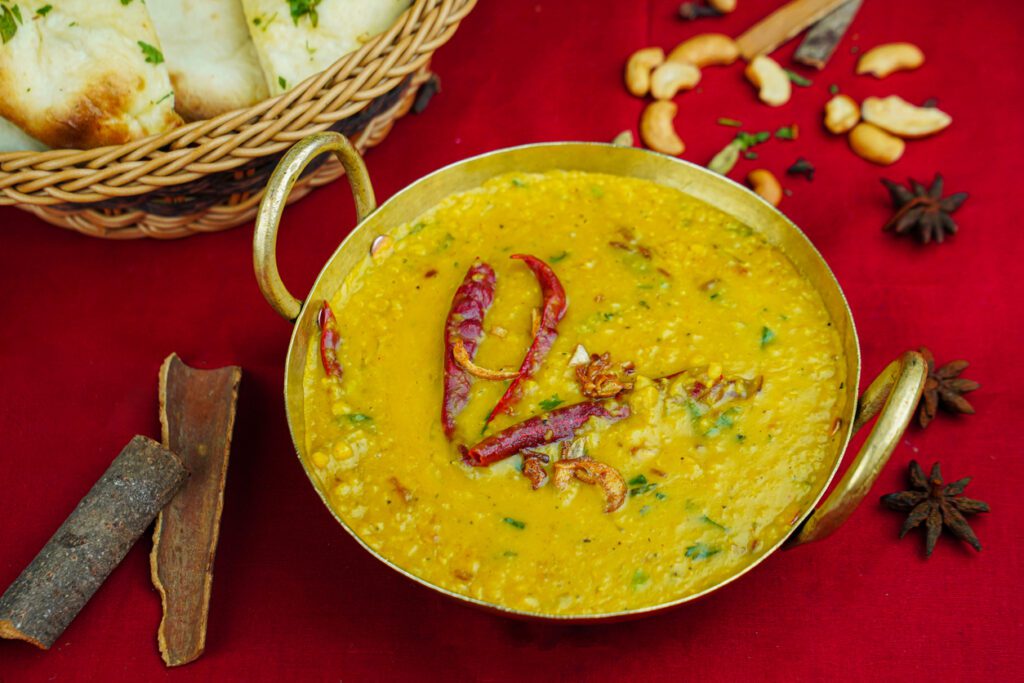
Dal makhani
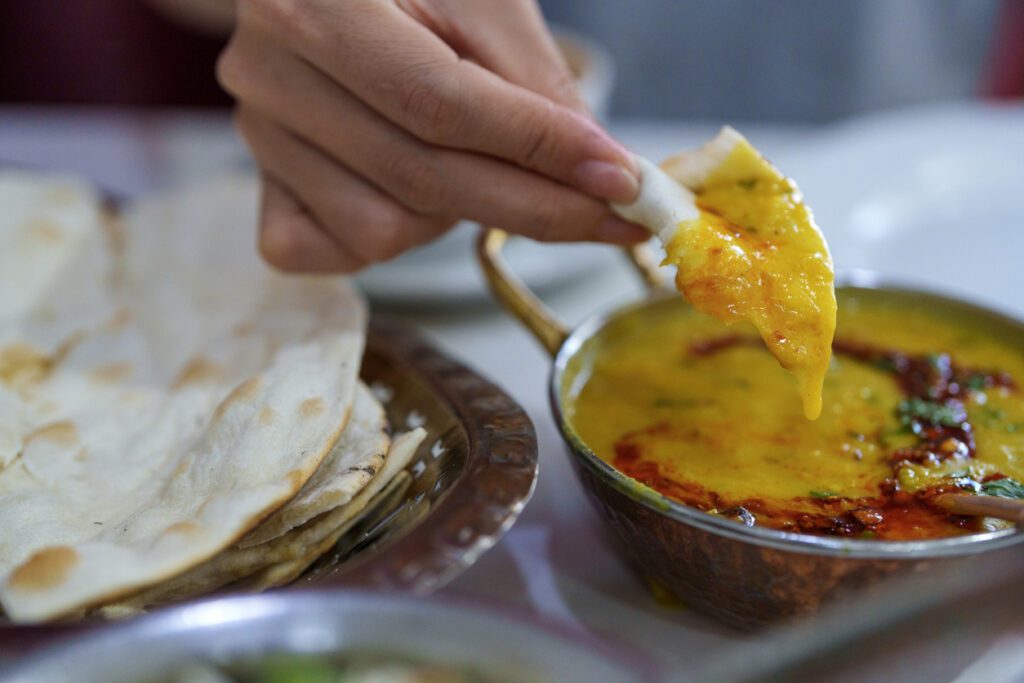
dal tadka
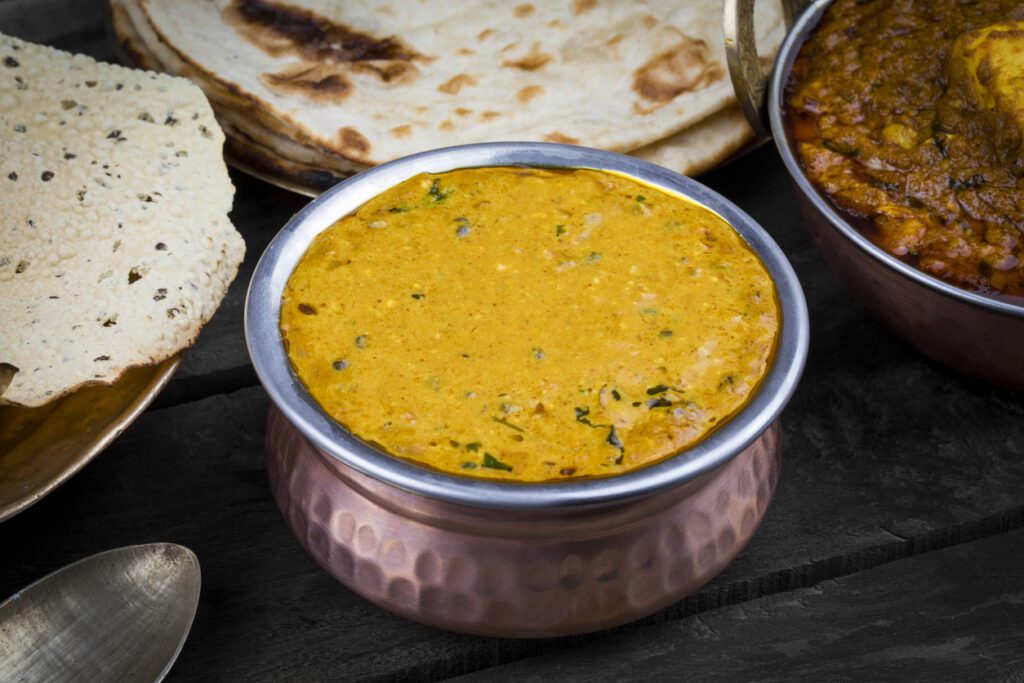
Dal Makhani
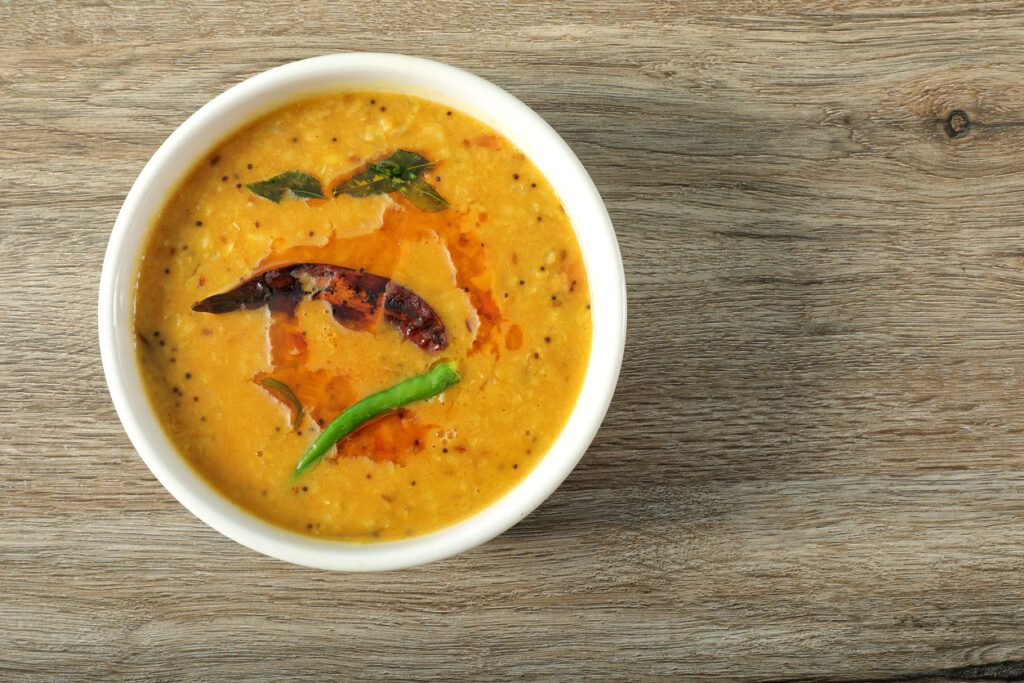
Mung Bean Soup
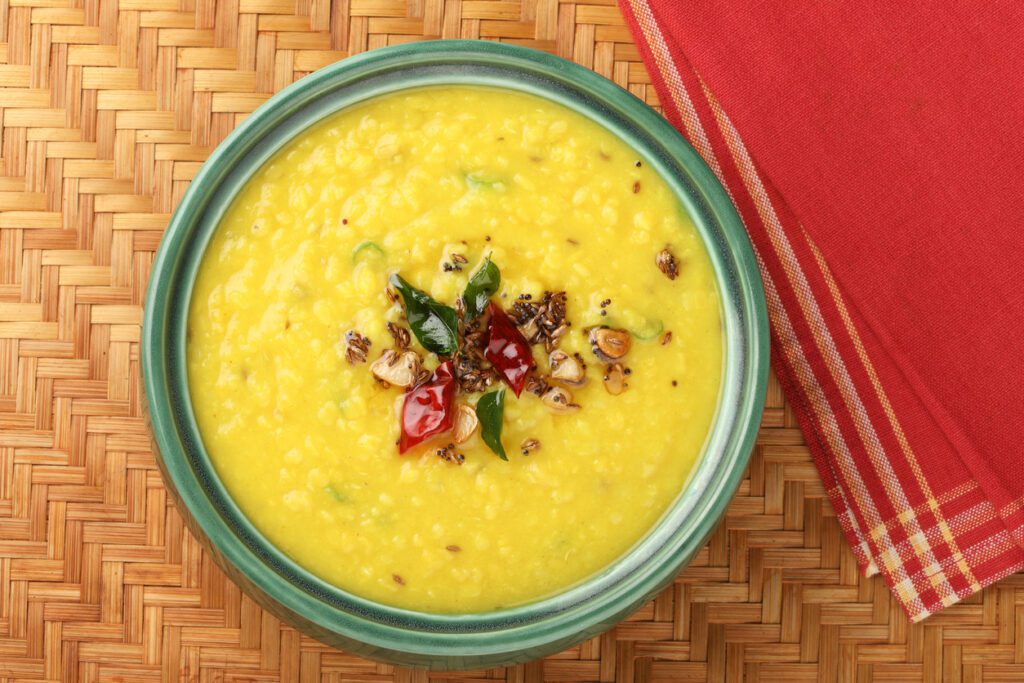
Mung Dal Tadka Curry
🇮🇳 Indian Lentils or Dal – are some of my favorite legumes.
Description
This Curry Lentil Soup is a nourishing one-pot meal that brings together the earthy richness of red lentils and the bold, aromatic flavors of Indian curry. Made effortlessly using Usha’s Curry Starter, it's the perfect balance of comfort and spice—warming, wholesome, and ready in under an hour. Whether you serve it with crusty bread, over rice, or enjoy it solo with a squeeze of lemon, it’s a bowl of pure comfort that’s as satisfying as it is simple to make.
Ingredients
Tempering the Spices
Building the Base
Prepare Lentils
Finishing touches that make the difference
Instructions
-
In a large pot, Add the Curry Starter, once it sizzles...reduce heat to low.
-
Add the spices to let them bloom.
-
Add tomatoes, and simmer for 3-4 min until tomatoes are slightly softened.
-
Add water or broth and vegetables.
-
Bring to a boil, then reduce heat and simmer uncovered for 15 minutes, stirring occasionally.
-
Add cooked and blended lentils
-
Add salt, pepper, and bring to a rolling boil for 15 min.
-
Finish with Tamarind paste, Our, fresh Dill. and lemon juice for brightness if it is too spicy for you.
-
Garnish with chopped cilantro and serve hot.
-
See the notes for all the variety of serving suggestions.
Nutrition Facts
Servings 6
- Amount Per Serving
- Calories 285.18kcal
- % Daily Value *
- Total Fat 6.01g10%
- Saturated Fat 0.72g4%
- Sodium 260.42mg11%
- Potassium 988.39mg29%
- Total Carbohydrate 52.45g18%
- Dietary Fiber 25.92g104%
- Sugars 4.12g
- Protein 14.92g30%
- Vitamin A 122.53 IU
- Vitamin C 17.55 mg
- Calcium 250.68 mg
- Iron 10.17 mg
- Vitamin E 10.08 IU
- Vitamin K 69.13 mcg
- Thiamin 0.41 mg
- Riboflavin 0.19 mg
- Niacin 2.87 mg
- Vitamin B6 0.37 mg
- Folate 192.17 mcg
- Phosphorus 271.48 mg
- Magnesium 137.04 mg
- Zinc 3.15 mg
* Percent Daily Values are based on a 2,000 calorie diet. Your daily value may be higher or lower depending on your calorie needs.
Note
Serving Suggestions
- Serve with warm naan, crusty bread, or over rice.
- For a creamier texture, serve with a dollop of Plain Yogurt and a squeeze of lemon and a touch of salt.
- Add chopped spinach or kale in the last 10 min to get a more earthy flavor
- Serve with avocado slices, lime, salt and a couple table spoons of rice.
- Serve with Idly (Cream of wheat dumplings).
